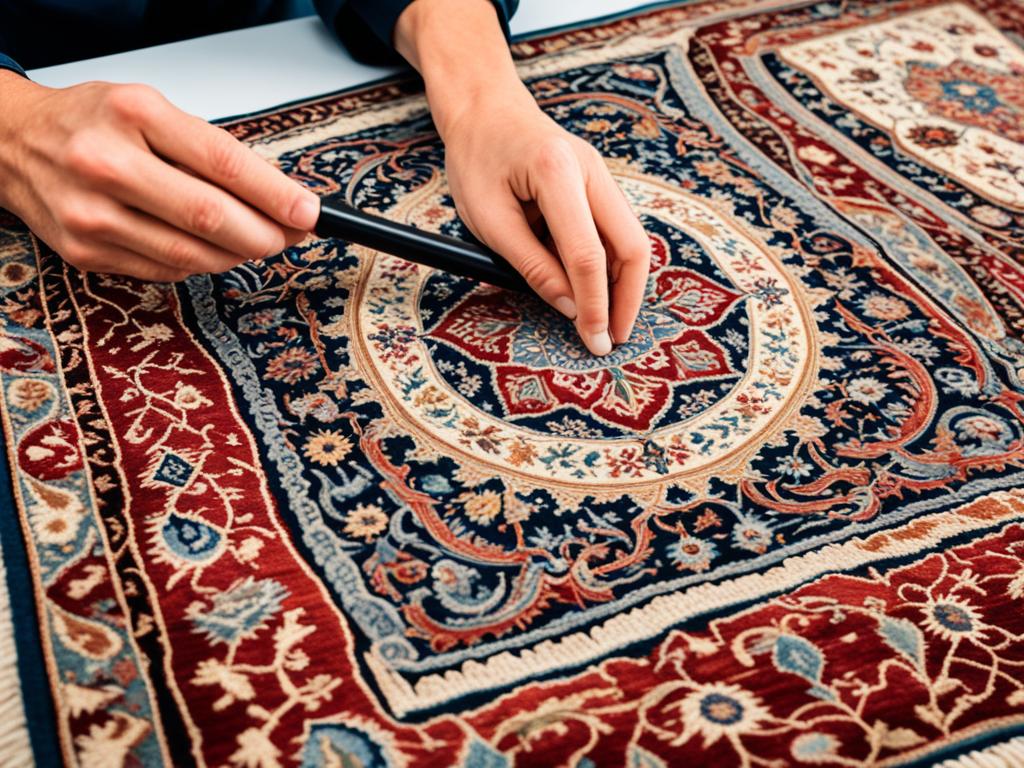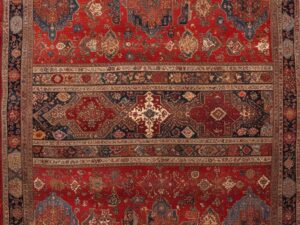Authentic Persian rugs are treasured possessions, but it can be difficult to determine if a rug is truly handmade and from the Middle Eastern region. Machine-made rugs and Persian look-a-likes are common in the market, making it challenging to discern the authenticity of a Persian rug. However, there are several key features to look for that can help you determine if a Persian rug is real.
Key Takeaways:
- Authentic Persian rugs are hand-knotted and made in the Middle Eastern region, specifically in Iran.
- Machine-made rugs are not considered genuine Persian rugs.
- Examine the knots on the underside of the rug to determine if it is hand-knotted or hand-tufted.
- Handmade Persian rugs may have imperfections, while machine-made rugs are often perfect on both sides.
- The material and fringe of a Persian rug can provide valuable insights into its authenticity.
Finding Out Where the Rug Is Made
When it comes to determining the authenticity of a Persian rug, one crucial aspect to consider is where the rug is made. True Persian rugs are manufactured in the Middle Eastern region, specifically in Iran. These rugs are known for their exquisite craftsmanship and rich cultural heritage.
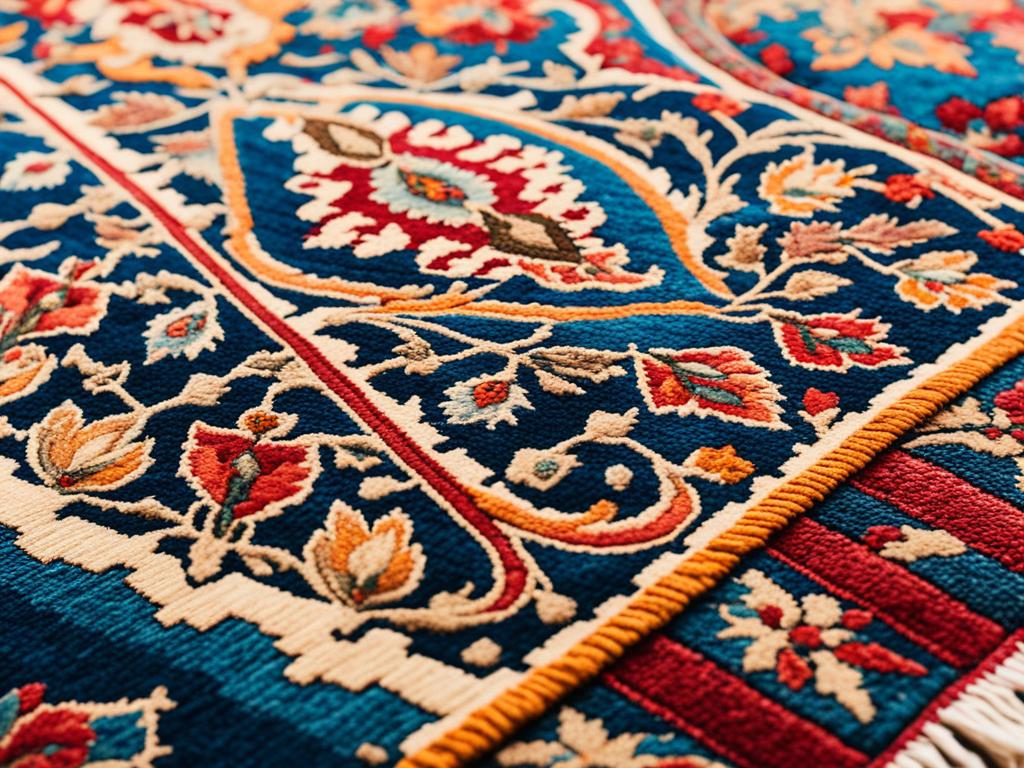
Handmade Persian rugs are a testament to the artistry and skill of the Iranian weavers. Each rug is meticulously crafted using traditional techniques that have been passed down through generations. These rugs are prized for their intricate designs, vibrant colors, and incredible durability.
On the other hand, machine-made rugs are commonly produced in countries like the United States and Europe. While they may visually resemble Persian rugs, they lack the same level of authenticity and attention to detail.
It’s important to note that hand-knotted rugs from other countries, such as Pakistan, India, and China, can also be beautiful and of high quality. However, they are not considered authentic Persian rugs unless they are made in Iran.
By understanding the origins of Persian rugs and the importance of their Middle Eastern heritage, you can make an informed decision when purchasing a rug for your home.
“The art of weaving Persian rugs is deeply rooted in the history and culture of Iran, making them truly unique and special.”
Now, let’s delve deeper into other essential factors to consider when determining the authenticity of a Persian rug.
Checking if it’s Hand-Tufted or Hand-Knotted
Genuine Persian rugs are known for their exquisite craftsmanship and attention to detail. One key factor in determining the authenticity of a Persian rug is whether it is hand-tufted or hand-knotted. Hand-knotted rugs are meticulously created by skilled weavers, with each individual knot carefully tied by hand. This labor-intensive process results in a rug that is not only visually stunning but also built to last a lifetime.
On the other hand, hand-tufted rugs are made using a tufting gun, which quickly inserts loops of yarn into a fabric backing. While hand-tufted rugs may look similar to their hand-knotted counterparts, they lack the same level of craftsmanship and durability. In fact, hand-tufted rugs tend to be weaker and have a shorter lifespan, typically lasting around 7 years.
To differentiate between a hand-tufted and hand-knotted Persian rug, a closer inspection is required. One method is to examine the underside of the rug. In a hand-knotted rug, you should see clear, visible knots that connect the rows of the rug together, as each knot is individually tied by hand. On the other hand, hand-tufted rugs will have a fabric backing with no discernible knots.
Here is a comparison between hand-tufted and hand-knotted Persian rugs:
| Hand-Tufted Rugs | Hand-Knotted Rugs |
|---|---|
| Created using a tufting gun | Created by skilled weavers, each knot is carefully tied by hand |
| Less durable, with a lifespan of around 7 years | Built to last a lifetime |
| No visible knots on the underside | Visible knots connect the rows of the rug together |
By examining the knot structure and construction method, you can determine whether a Persian rug is hand-tufted or hand-knotted. Investing in a genuine hand-knotted Persian rug ensures that you are acquiring a beautiful piece of art that will stand the test of time.
Expert Tip:
When evaluating a rug, gently run your fingers over the surface. Hand-knotted rugs will have an uneven texture due to the variations in the knots, while hand-tufted rugs will feel more uniform.
Examining The Front and Back of the Rug
When it comes to determining the authenticity of a Persian rug, it’s essential to carefully inspect both the front and back of the rug. This examination can reveal important clues about whether the rug is handmade or machine-made.
Handmade Persian rugs are crafted on traditional wooden looms, which means they are likely to have some imperfections throughout the rug. These imperfections, such as slight variations in pattern or weaving, are often seen as a hallmark of authenticity. They showcase the artisan’s skill and the unique character of the rug.
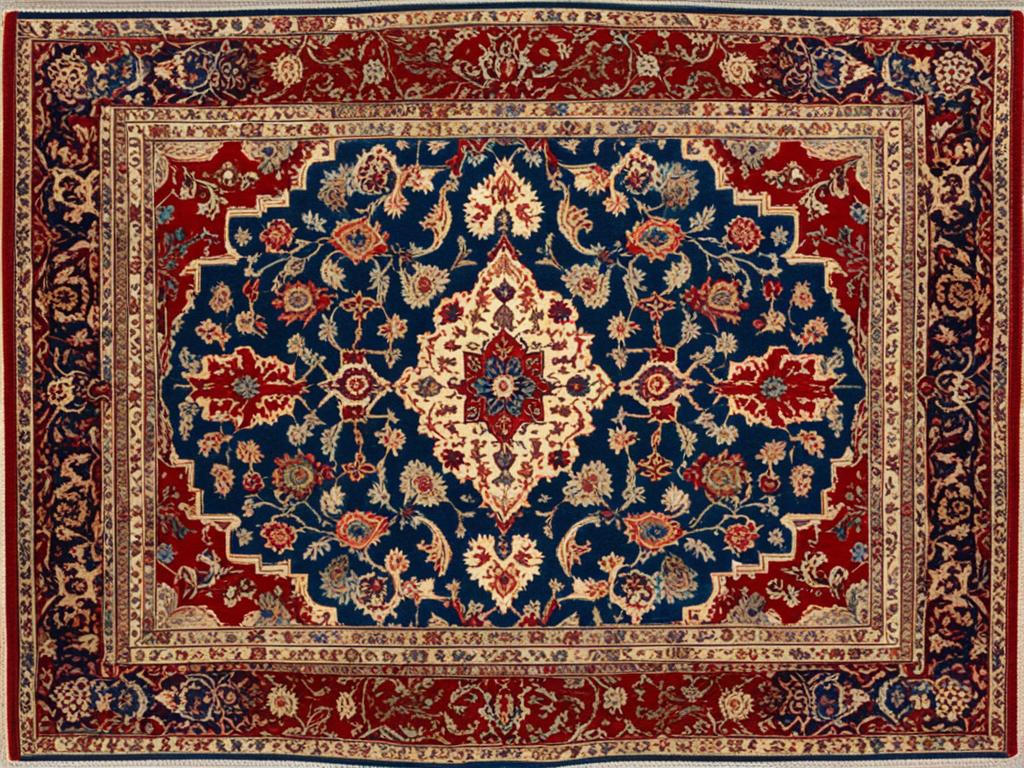
On the other hand, machine-made rugs tend to be more uniform and perfect on both the front and back. The precision and consistency of machine-made rugs are a result of the mechanized production process, which eliminates the imperfections found in handmade rugs.
Another distinguishing feature between handmade and machine-made rugs is the presence of a mesh backing. Machine-made rugs are often manufactured with a stiff plastic mesh backing, intended to provide durability and stability. However, this mesh backing is not typically found in authentic Persian rugs.
Authentic Persian rugs have a soft underside with no additional backing. This allows the rug to be more pliable and flexible, conforming to the shape of the floor underneath.
Comparing Handmade and Machine-Made Rugs
| Handmade Persian Rugs | Machine-Made Rugs | |
|---|---|---|
| Front and Back Appearance | May have imperfections | Uniform and perfect |
| Backing | No additional backing | Stiff plastic mesh backing |
Examining the front and back of a Persian rug is an important step in determining its authenticity. The presence of imperfections, the absence of a mesh backing, and the flexibility of the rug all indicate that it is truly handmade. These elements contribute to the unique beauty and value of a genuine Persian rug.
Checking the Fringe and Material
When determining the authenticity of a Persian rug, two important factors to consider are the fringe and material. Let’s explore how these aspects can provide valuable insights into the rug’s genuineness.
Fringe
In genuine Persian rugs, the fringe is an integral part of the rug itself and is formed during the weaving process. Skilled weavers incorporate the fringe seamlessly into the design, creating a cohesive and harmonious look. This organic integration is a hallmark of an authentic Persian rug.
“The fringe on a Persian rug should look like an extension of the rug itself, not an added attachment.”
On the other hand, machine-made rugs often feature fringes that are sewn onto the rug after it is completed. These sewn-on fringes can be easily identified by examining the backside of the rug. If the fringe appears separate from the main body of the rug or if it doesn’t align with the rug’s pattern, it is likely a machine-made imitation.
Material
The material used in the construction of a Persian rug is another crucial element to consider. Authentic Persian rugs are crafted from natural materials such as wool, cotton, and silk. These fibers not only lend durability and longevity to the rug but also contribute to its luxurious feel and exquisite appearance.
“Natural materials like wool and silk give Persian rugs their exceptional quality and timeless beauty.”
On the other hand, synthetic materials are a clear indication of a fake rug. Synthetic fibers lack the authenticity, texture, and luster that natural materials provide. By examining the material composition, you can uncover whether a rug is a genuine Persian treasure or a modern-day approximation.
The Fringe and Material: Key Factors in Authenticity
The fringe and material of a Persian rug play a significant role in determining its authenticity. While genuine Persian rugs feature seamlessly integrated fringes formed during the weaving process and are made from natural materials like wool and silk, machine-made imitations often have sewn-on fringes and synthetic fibers. By paying attention to these key factors, you can make an informed decision when purchasing a Persian rug.
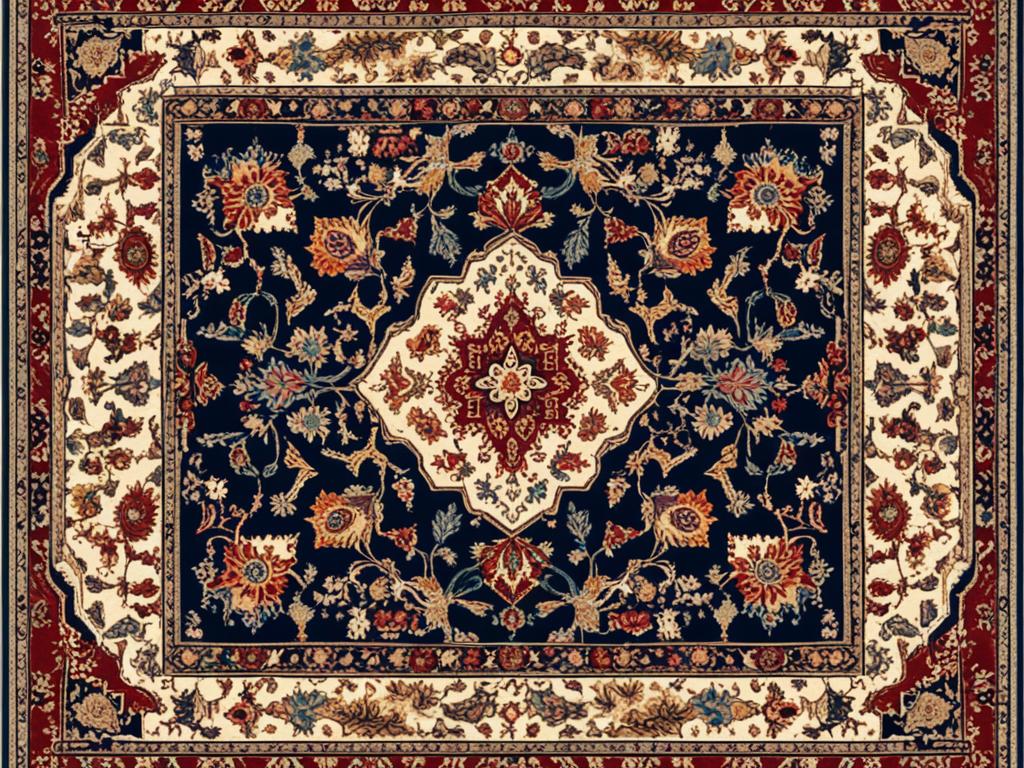
| Fringe | Material |
|---|---|
| Forms an integral part of the rug | Made from natural materials such as wool, cotton, and silk |
| Seamlessly integrated during weaving | Provides durability, luxury, and timeless beauty |
| Sewn-on fringes indicate machine-made rugs | Synthetic materials indicate fake rugs |
Conclusion
Identifying an authentic Persian rug can be a daunting task, given the prevalence of machine-made and imitation rugs in the market. However, by paying attention to key factors such as the rug’s origin, knot structure, design, fringe, material, and color, you can enhance your ability to purchase a genuine Persian rug.
When evaluating a Persian rug, start by researching reputable dealers who specialize in authentic rugs. This ensures that you are getting a reliable source and increases the likelihood of purchasing a genuine rug. Additionally, trust your instincts and be prepared to invest time and effort in examining the rug closely.
Look for unique design patterns and imperfections that are characteristic of handmade rugs. Genuine Persian rugs are hand-knotted, with each knot meticulously tied by skilled artisans. The fringe is also a crucial feature, as it is an integral part of the rug’s construction in authentic rugs.
Furthermore, inspect the material used in the rug. Natural materials like wool, cotton, and silk are commonly found in Persian rugs, while synthetic materials are often indicative of machine-made rugs.
By following these tips and with proper research, you can increase your chances of purchasing an authentic Persian rug, adding a touch of beauty and elegance to your home.
